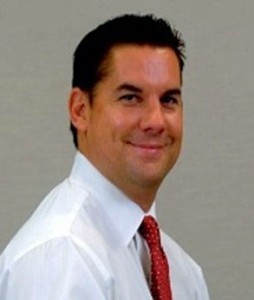“There’s no such thing as a free lunch.” This widely used adage essentially communicates the idea that it is impossible to get something for nothing. Although this is intuitive for most people, when it comes to 401(k) plans, far too many participants think they are getting a free lunch.
According to a recent survey by LIMRA, an association of insurance and financial services organizations, about 22 percent of all 401(k) participants did not believe they paid any 401(k) fees. Nearly 50 percent admitted they did not know what fees they were paying.
Over the past few decades the burden of retirement plan savings has shifted from employer to employee. Company pension plans are fast going the way of the dinosaur and are being replaced by 401(k) plans.
While the employer may make a matching contribution, the bulk of retirement saving responsibility is the employee’s. With more of their own retirement money at risk, participants owe it to themselves to understand the amount of fees they are paying in their 401(k) plan.
Finding the fees
In a typical 401(k) plan there are several layers of fees paid to various companies involved with the plan: the company or custodian who holds the assets, the plan administrator who performs recordkeeping, management fees of the investments, broker or financial advisor fees, etc.
According The 401(k) Averages Book, the oldest, most recognized source for non-biased, comparative 401(k) information, in 2012 the average total cost of a small company plan (50 participants/$2.5 million in assets) was 1.46 percent and the average cost of a large company plan (1,000 participants/$50 million in assets) was 1.03 percent.
Starting in 2012, the Department of Labor required annual fee disclosures in an attempt to make participants more aware of their 401(k) plan expenses. The fee disclosure must be provided annually by Dec, 1 and will include details about the plan expenses.
Within a 401(k) there are several investment options, and they will each have their own expense ratio. For example, a bond fund should have a much lower expense ratio than an emerging markets stock fund. Since each participant is free to choose their own investment mix, it is up to them to do the math to figure out their personal expense. The expense ratio, in many cases, encompasses the total cost of the plan to the participants. This expense ratio has already been included in the share price of the fund and can be found in the annual fee disclosure statement.
It easy certainly easy to understand why 401(k) plan participants have a misunderstanding of the fees they are paying. Despite the disclosures provided, they still need to do some legwork to figure out what fees are embedded in their plan. A recent disclosure I reviewed was more than seven pages long and would likely confuse the average investor.
Quarterly statements do not show fees. The account values have already been reduced by plan fees.
The new fee disclosure requirements, combined with fierce competition for 401(k) plan assets, should continue to propel the trend towards lower overall 401(k) fees. This is good news for participants, who can use all the help they can get as they save for retirement.
Should I rollover my 401(k)?
Leaving a current employer is a triggering event which allows the participant the opportunity to initiate a direct rollover to an IRA, which eliminates the cost of the plan administration. The only remaining cost would be the expense ratio of the investments, and these should be very transparent.
Unlike 401(k) plans, which have limited investment choices, establishing an IRA at one of the larger, independent custodians such as TD Ameritrade, Charles Schwab and Co., or Fidelity Investments will provide investment flexibility. If the burden of managing their retirement nest egg is too daunting, investors have the option to seek the advice of a financial professional.
While there is a cost to hiring a financial professional on an individual basis, the same fee likely exists within a 401(k) plan. Once again, the fee disclosure should help to identify the fees paid to a financial advisor within the plan. Within the context of the 401(k) plan, the financial advisor’s role is to choose the 401(k) custodian and the investment choices.
When an investor initiates a rollover of their 401(k) plan to an IRA, and chooses to work directly with a financial advisor, they should expect to receive a personalized level of investment advice and financial planning, along with a transparent fee structure.
Brad Keene is a Wealth Management Advisor, Portfolio Manager at Visionary Wealth Advisors. He is a CERTIFIED FINANCIAL PLANNER (TM), holds an MBA from St. Louis University and a B.S. in Finance from Eastern Illinois University. He has been advising clients since 1996 and is a lifelong Collinsville resident. Contact Brad at brad.keene@vwa-llc.com





please…..enough about fees…..what about education of plan participants….
the Congress, and the DOL, neither of whom are ‘covered’ by a 401(k)
will not let professionals provide advice to plan sponsors or plan participants….only education.
Can someone enlighten me as to the difference?
While a 401k is almost better than nothing, for the average Joe it’s just a cash cow for the banks and Wall St. in particular. A recent PBS investigation showed that if you work for 50 years and receive the typical long-term return of 7 percent on your 401(k) plan and your fees are 2 percent, almost two-thirds of your account will go to Wall Street. If your 401k should amount to $1,000,000 what you would end up with is about $340,000 to live on the rest of your life while the people who didn’t earn it sat in an office got most of it. This ABSOLUTELY why we can’t let the Paul Ryan, Rodney Davis, John Shimkus republicans to kill Social Security just so their Wall Street buddies can make BILLIONS of our hard earned cash by changing it over to a 401k.